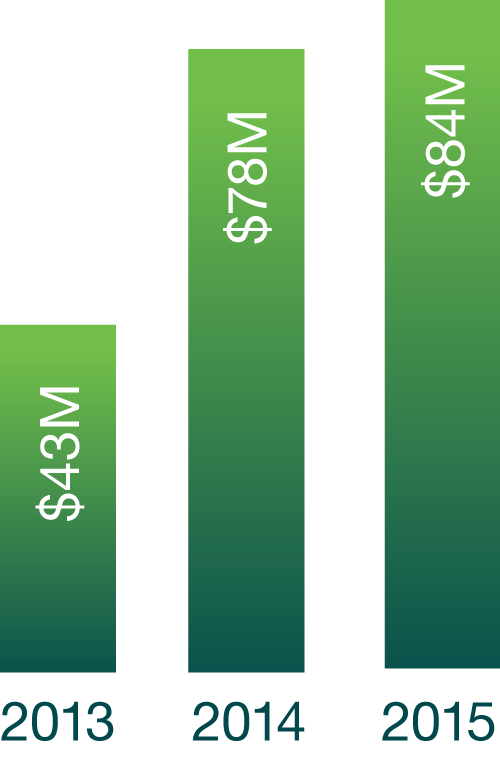
Results based service delivery.
Leading and coordinating the State road safety strategy.
The program represents the activities of the Office of Road Safety and its role supporting the Minister for Road Safety and the Road Safety Council to develop, coordinate, promote and monitor the State’s road safety strategy, Towards Zero.



The Account receives 100% of revenue from speed and red light camera fines and provides funds to agencies and organisations to implement priority safety initiatives consistent with Towards Zero. The Office monitors and reports on progress and results and together with the Road Safety Council, promotes the Towards Zero principle of shared responsibility of road safety with the objective of signi?cantly reducing road trauma.
Towards Zero is the State’s road safety strategy. Using a Safe System approach, Towards Zero advocates for safe drivers in safe vehicles, travelling at safe speeds on safe roads. If all cornerstones of the strategy are fully implemented, 11,000 people could be saved from death or serious injury between 2008 and 2020, a 40% reduction on the 2005 to 2007 baseline.
Since the start of the Towards Zero strategy in 2008, the rate of fatal road trauma has dropped by 23%, from 9.4 fatalities per 100,000 population to 7.2 fatalities per 100,000 in 2014. Despite the strong gains in the past five years, the rate of improvement is below that necessary to achieve the aspirational 40% reduction by 2020 under Towards Zero. For more information visit the Road Safety Commission website.
The Road Safety Council is chaired by Professor Murray Lampard APM and includes senior representatives from the departments of Transport, Planning, Education and Health, Main Roads, WA Local Government Association, Insurance Commission of WA, Police and the Royal Automobile Club of WA representing the State’s road users. The Council identifies, recommends and monitors the effectiveness of measures to improve road safety for the Minister for Road Safety and coordinates the implementation of agreed initiatives.
Executive Director Office of Road Safety, Iain Cameron, was honoured at the Australasian College of Road Safety Awards, winning the 2014 Fellowship Award.
In early 2015, the Government increased mobile camera capacity in regional areas and added five new fixed cameras to enable the existing sites on Perth’s freeways to operate 24/7. The Government announced its intention to review the way speed enforcement is delivered in Western Australia as part of a planned expansion of fixed cameras over the next five years.
The Motorcycle Safety Review Group, involving the Office, Police, Insurance Commission of WA, Department of Transport and Main Roads, has analysed 7,500 crashes involving motorcyclists over the past five years to determine problem crash types, factors and locations. The Group is also examining detailed data on the factors associated with the crash together with rider licence and offence history to develop measures to improve rider safety. The Premier and Minister for Road Safety hosted a forum with rider advocacy leaders to discuss issues around cycling safety and priorities for action. Along with this, the Office has delivered a mass media cycling safety campaign and a motorcycling safety campaign.
The Wheatbelt Region continues to experience high rates of fatal and serious crashes relative to other regions. In response, a cross-agency working group of representatives from the Office, Main Roads, Police and the WA Local Government Association is undertaking a highway safety review of the Wheatbelt Region.
The review will identify and treat travel routes with the greatest number of serious casualties per kilometre rather than attempt to treat every local road. Each agency has contributed data and information such as crash histories, existing road conditions and treatments, traffic volumes and enforcement operations. The review is focusing on Great Eastern Highway and Great Southern Highway, which have high crash densities but differing traffic volumes and road conditions. Technical experts will travel on the designated routes to observe crash locations and road conditions to allow various treatment options and responses to be considered and compared. The review will report on issues identified along the routes, the process undertaken and proposed solutions. Further information is available on the Road Safety Commission website.
In September 2014, new penalties for speeding and 115 other offences under the Road Traffic Code 2000 came into effect. Parliament also introduced and passed amendments to the Road Traffic Act 1974 to allow for an increase in the maximum allowable infringement.
The review of penalties was based on research from the Centre for Accident Safety Research and included recommendations considered for local relevance by a Road Safety Council working group with further consideration given to community acceptability. Penalties were increased for mobile phone offences, red light running, failure to give way (particularly to pedestrians) as well as offences relating to speeding, drink driving for novice drivers, non-use of restraints and motorcycle helmets.
A new offence was created for deliberately altering or obscuring a number plate, an emerging trend that enables drivers to avoid speed camera detection and which features strongly in fuel drive offs and organised crime. The changes aim to improve community safety, deter illegal behaviours and reduce crash and injury risks. A mass media campaign supported the changes, informing the public of the penalty review and the increase in demerit points and fines.
Improving and promoting road safety requires a partnership approach. During the year, the Office has worked with various Government and commercial partners to promote road safety, focusing on the following areas:
The Road Safety Community Grants program provides community groups with grant funding for events or projects that meet set criteria. A Community Grants Committee, led by the Road Safety Council Chair, assesses applications, with recommendations forwarded to the Minister for Road Safety for approval. Over the last year the Minister approved over $150,000 project and one-off event grants to sporting clubs, local schools and Local Government to deliver road safety messages.
In addition to the cycling, motorcycling and legislation change road safety campaigns, mass media campaigns covered drink driving enforcement, speeding behaviour and enforcement, mobile phone distractions, restraints, safer vehicles, and fatigue. The Office also implemented recommendations from the Government’s 2013 review of the effectiveness of mass media for promoting road safety in Western Australia. The review identified gaps in the way mass media campaigns are developed, and provided guidance and consistency with methodology and best practice nationally and internationally. The Office’s community education efforts were recognised at the 2014 Perth Royal Show’s Commercial Exhibitor Awards where they won the Design and Presentation Government Department category.

In 2014, 44 motorcyclists were killed as a result of a crash, an increase from 27 in 2013. The eight cycling fatalities was also high compared with previous years.
In conjunction with other Government agencies the Office of Road Safety commenced a comprehensive review of motorcycle safety to identify practical measures to improve safety for riders. A motorcycle safety community education campaign, using television, press and online material sourced from New South Wales, ran from April to June 2015.
A joint cycling education campaign was launched by the Acting Minister for Road Safety and the Minister for Transport in September 2014. The campaign encouraged sharing of the road and responsible use by drivers and cyclists. It involved advertising on bus backs, bus shelters, radio and online, as well as share the path stickers on the PSP network.
In March 2015, a roundtable meeting with the Premier, the Minister for Road Safety, agencies and cycling stakeholder advocates discussed growing concerns about cycling rider safety. The workshop explored achievable options for improving cycling safety, which are currently being considered by Government. If you would like more information visit the Road Safety Commission website.
A roundtable meeting with the Premier, the Minister for Road Safety, agencies and cycling stakeholder advocates discussed growing concerns about bicycle rider safety
CONNECT WITH US